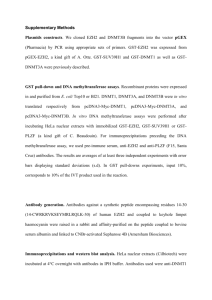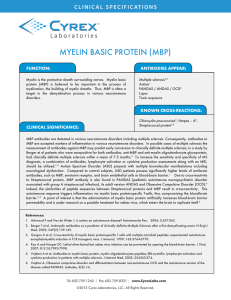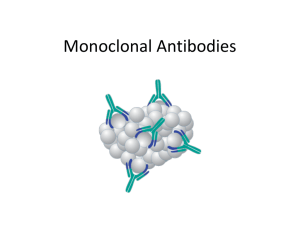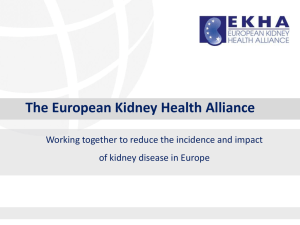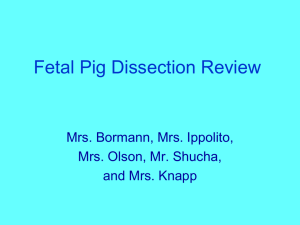Epstein-Barr Virus
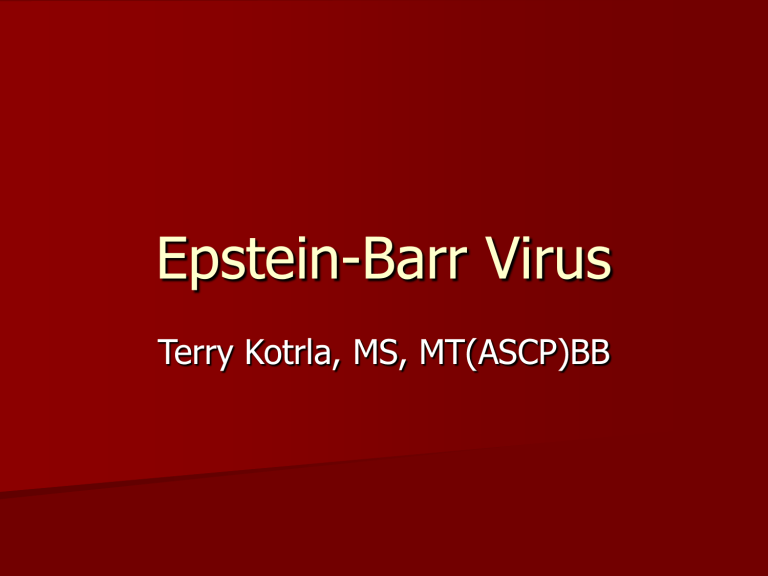
Epstein-Barr Virus
Terry Kotrla, MS, MT(ASCP)BB
Diseases
African or Burkitt’s Lymphoma
– malignant B-cell neoplasm
– presents as a rapidly growing tumour of the jaw, face or eye
– grows very quickly, and without treatment most children die within a few months
– Epstein-Barr virus (EBV) has been strongly implicated
African or Burkitt’s Lymphoma
Although BL is a very rapidly growing tumour it responds well to treatment.
Three pictures: before treatment, 3 days and 6 days after treatment
Nasopharyngeal Carcinoma
Endemic in South China, Africa, Arctic Eskimos
This is a malignant tumour of the squamous epithelium of the nasopharynx.
100% contain EBV DNA
Rates are less than 1 per 100,000 in most populations
Nasopharyngeal carcinomas are found in association with reactivation of latent Epstein-
Barr Virus.
The exact mechanisms of association are unknown
B-Cell Lymphoma
In most individuals infected with EBV, the virus is present in the B-cells, which are normally controlled by T-lymphocytes
When T-cell deficiency exists, one clone of EBVinfected B-lymphocytes escapes immune surveillance to become autonomously proliferating.
EBV induced B cell lymphomas are most prevalent in immunocompromised patients.
Oral Hairy Cell Leukoplakia
Viral infection of the oral cavity.
Indicator of HIV infection as well as of a person's lessening or weakening immunity
Infectious Mononucleosis
Downey cells may be present
Heterophile Antigens/Antibodies
An antigen or antigenic determinant which is found in different tissues in more than one species.
These are antibodies found in one specie of animal (such as humans) which react against a component of another specie.
Paul Bunnell Test
The original Paul-Bunnell test was a simple titration of sheep cell agglutinins but this procedure was subsequently modified in order to distinguish between sheep cell agglutinins formed in IM and the
Forssman-type antibodies found in normal serum, serum sickness and in certain other conditions.
Tissues rich in Forssman antigen (guinea pig kidney) absorb
Forssman antibodies but do not affect the heterophil antibodies in
IM.
Heterophil antibodies are absorbed by beef cells,
Forssman hapten is a glycolipid usually associated with a protein, the determinant being largely carbohydrate and therefore heat stable.
Davidsohn Differential
The principle behind the Paul-Bunnell-Davidsohn test is that the two types of sheep agglutinins are distinguished by titrating them before and after absorption with guinea pig kidney and ox cells.
Patients serum containing antibodies due to IM is added to guinea pig kidney cells. These antibodies are not absorbed by the kidney cells. These antibodies then react with Beef (Ox) red blood cells which causes agglutination and is a positive test for IM.
Patients serum containing Forssman antibodies are added to guinea pig kidney cells. Antibodies are absorbed by the kidney cells. These antibodies are then allowed to react with Beef red blood cells which does not cause agglutination. This is a positive test for Forssman antigens.
Davidsohn Differential
* To be considered absorbed there must be greater than a three tube difference between the presumptive titer and the differential titer.
Heterophil Antibody
------------------------
Infectious Mono
Forssman
Serum Sickness
Kidney Extract
------------------
Not Absorbed
Absorbed
Absorbed
Beef Erythrocyte
---------------------
Absorbed
Not Absorbed
Absorbed
Davidsohn Differential
Advantages Disadvantages
When properly performed, this test is specific for Infectious
Mononucleosis and falsepositive results are rare.
Davidsohn Differential test is very time consuming and burdensome.
